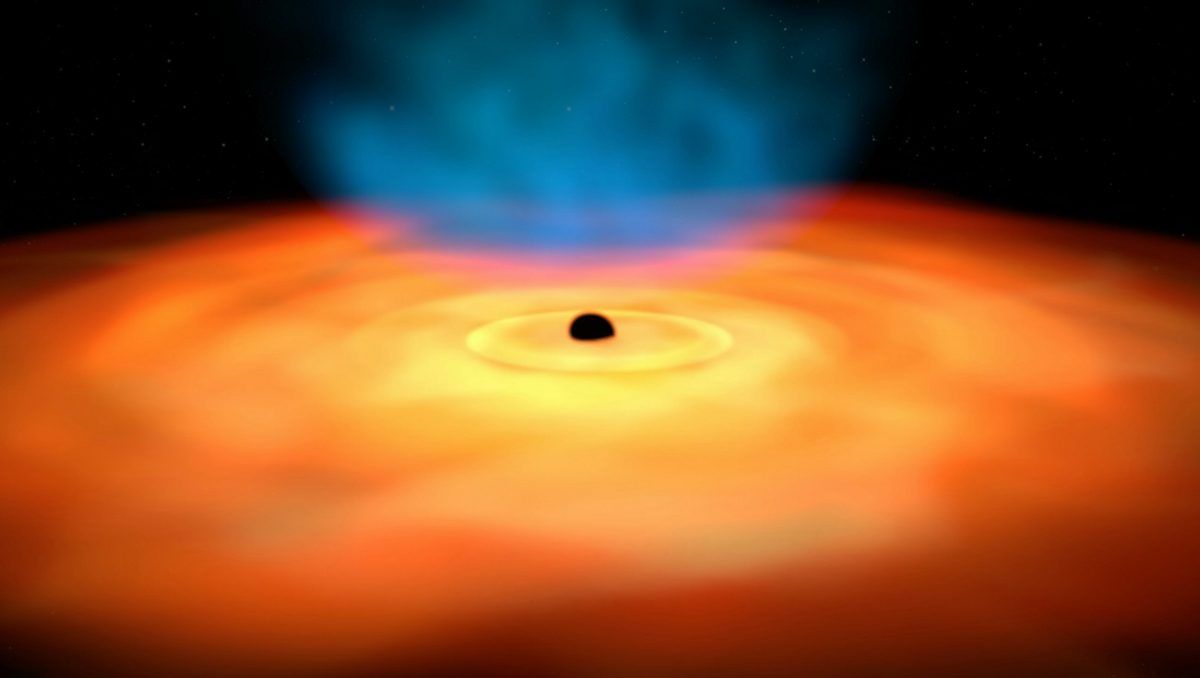
Supermassive blackholes have been used to measure the expansion of the universe for the first time – revealing the cosmos is growing faster than previously thought.
Astronomers at Durham University used the huge amounts of radiation they emit as “beacons” to track the expansion of the early universe.
Black holes are regions of space where gravity is so strong that not even light can escape that are formed after a star collapses in on itself – first predicted by Einstein’s theory of general relativity more than 100 years ago.
Supermassive ones are typically found in the heart of galaxies and can be billions of times more heavy than our Sun.
Though nothing can escape them, they are among the brightest points in the universe because of the huge amounts of radiation emitted by matter they suck in.
Now researchers at Durham and the Università degli Studi di Firenze, Italy, have used them as “beacons” to track the expansion of the universe one billion since the Big Bang.
Previous studies of light from supernovae – exploding stars – only revealed information up to four or five billion years after the birth of our 13.7 billion-year-old cosmos.
The light-speed emissions from the accreting supermassive black holes in the core of galaxies, also known as active galactic nuclei (AGN), emitted during the early universe, continues to reach Earth today as background radiation.
Measurements of ultra-violet and x-rays from 1,600 AGNs have allowed researchers to look even further back in time, providing them with a clearer picture of the expansion of the early Universe.
The data from the Sloan Digital Sky Survey telescope and the European Space Agency’s XMM-Newton Space Observatory showed the cosmos was expanding faster than previously thought.
The findings could mean that current theories based on the assumptions over a mysterious “dark energy” powering the expansion – including a theoretical constant associated with them known as the Standard Cosmological Model – would need to be reworked.
Study co-author Dr Elisabeta Lusso, in the Centre for Extragalactic Astronomy, Durham University, said: “Black holes are the most luminous persistent sources of the Universe and allow us to measure its expansion rate at very early times.
“Our results suggest that the early expansion of the Universe is different from that predicted by the Standard Cosmological Model. We may need to explore new physics, for example rethinking the potential properties of dark energy.”
Lead author Dr Guido Risaliti, of the Università degli Studi di Firenze, said: “One of the possible solutions to the expansion of the early Universe would be to invoke an evolving dark energy, with a density that increases as time goes by.
“This would imply an expansion rate of the Universe in agreement with our measurements.
“However, this is only one of the many models (all including new physics) proposed by the theorists, and much more work is needed to find a unique solution.”
The researchers said the next step in their study was to try to identify and measure the distance of black holes that exist even closer to the birth of the Universe.
The study was published in the journal Nature Astronomy.
By Berny Torre